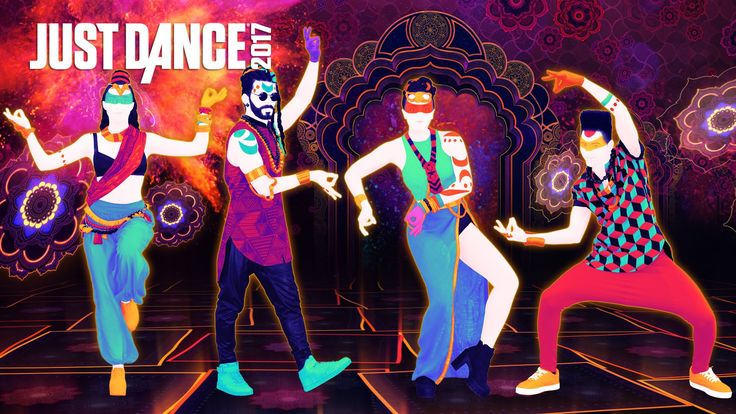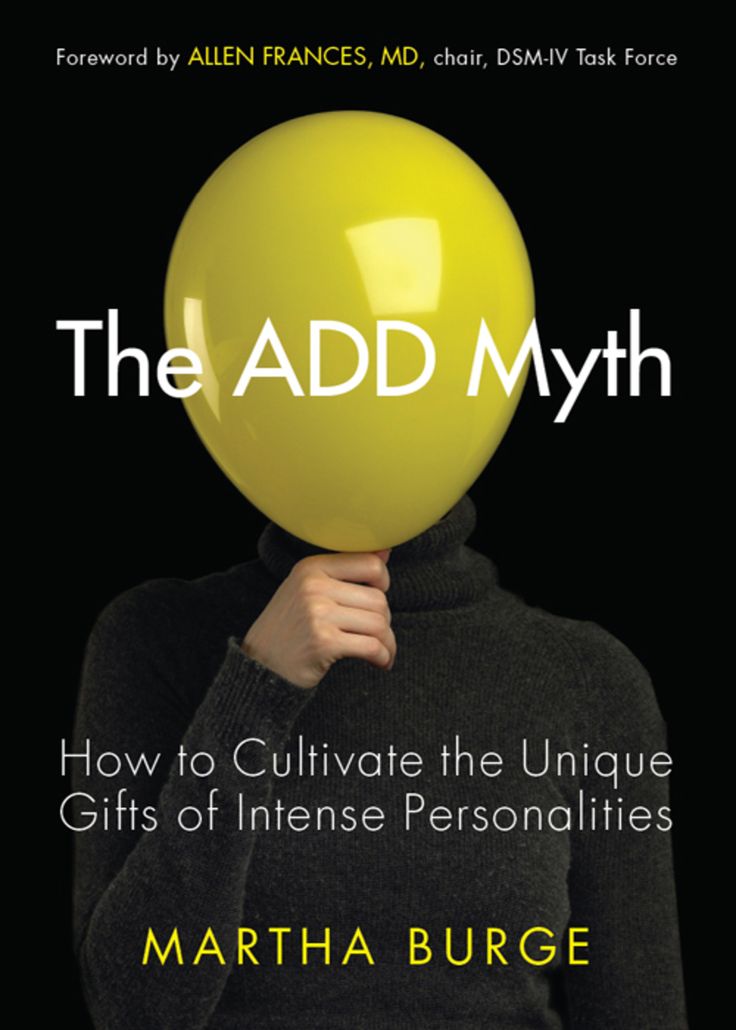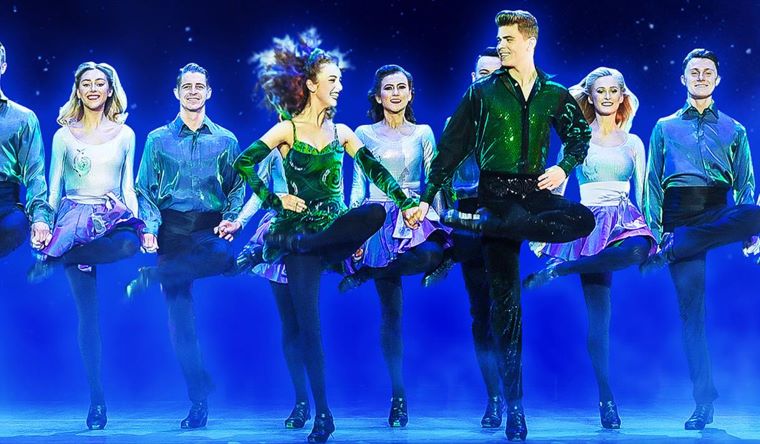|
PHOTO CREDIT: Above photo by John Rickman Photography, San Jose, California.
|
|
by Shira
Table of Contents
- Introduction
- Definition
- A Historical Perspective
- Ancient Egypt as Inspiration for Modern Dance
- Irena Lexova's Book
- Was Lexova Right?
- What Other Dance Scenes Come from Ancient Egypt?
- Where Can Pharaonic Dance Be Seen?
- Video
- Special Theatrical Productions
- Dance Festivals or Seminar Shows
- Performance Art
|
- How to Try Pharaonic Dance
- Reflect on What You're Trying to Do
- Costuming
- Music
- Movement
- Resources to Inspire You
- Where to Perform Pharaonic Dance
- Closing Thoughts
- Related Articles
|
IntroductionEvery once in a while, the term "Pharaonic dance" comes up among belly dance communities outside of the Middle East.![]() You might see it mentioned as the style intended for a particular song appearing on an Eddie Kochak music album. Or maybe you'll overhear another dancer at an event stating that one of her specialties is Pharaonic dance. So what is Pharaonic dance, what is its history, who performs it, and how does one do it? You might see it mentioned as the style intended for a particular song appearing on an Eddie Kochak music album. Or maybe you'll overhear another dancer at an event stating that one of her specialties is Pharaonic dance. So what is Pharaonic dance, what is its history, who performs it, and how does one do it?
ABOUT THE PHOTO: Delilah Flynn of Seattle performs a dance in which she portrays Hathor, with a brass mirror in one hand and an ankh in the other.
Throughout this article, you can click on the images to see them in greater detail. This may be especially helpful on the images of dance from tombs and temples in Egypt. |
|
DefinitionPeople who use the term "Pharaonic dance" generally are referring to "dance style performed in the time of the Egyptian pharaohs". Often, these are based on modern-day beliefs about the culture of ancient Egypt, many of which have not been supported by research. Often, these are based on modern-day beliefs about the culture of ancient Egypt, many of which have not been supported by research.
In other words, most such performances are a 20th-century or 21st-century creation which grew out of the Orientalist art and literature movement of the 19th century and the early days of the modern dance movement led by artists such as Ruth St. Denis.
Pharaonic dance is often performed to either New Age music or melodies constructed by musicologists who attempt to recreate ancient musical instruments and build a hypothesis around how they might have been played.
The dancer or ensemble wears clothing inspired by the paintings from tomb walls. Many such dances will include poses with the palms of the hands flat and parallel to the floor, sometimes with candles balanced on them. Such poses aren't supported by historical research, but because Western audiences have been conditioned by the posturing of modern dance artists in the early 20th century to expect these poses in Pharaonic dance, performers often include them to lead the audience into the right frame of mind.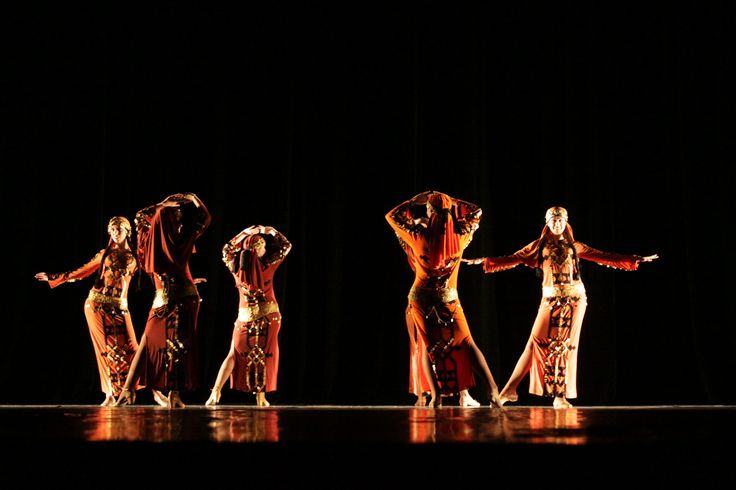
ABOUT THE PHOTO: Arabella of Toronto, Canada wears a Pharaonic costume that she made. Photo by Carolyn Thompson. Several articles written by Arabella including instructions on how to make this costume appear elsewhere on this web site. |
|
Of course, the major problem with the "weird hand positions" approach is that it's a cliché. People do it because it's easy, but that doesn't mean it's the path to a captivating performance.
That's why some people who refer to their dance as "Pharaonic" such as Delilah Flynn and Laurel Victoria Gray take a different path. What they and others create looks entirely different from the above. These dancers have done their own independent research into examining artwork from ancient Egyptian sources. They have attempted to extrapolate what types of movement may have been depicted by such pictures. These dancers have provided the most exciting interpretations what the dance forms of ancient Egypt may have looked like. These dancers have provided the most exciting interpretations what the dance forms of ancient Egypt may have looked like.
ABOUT THE PHOTO: Shira wears a Pharaonic costume made by Reda al-Hadidi's atelier in Cairo. The photo was taken backstage after depicting Nefertari in the opening mawwal for a Nubian dance set with Habeeba Hobeika's dance company. |
|
A Historical PerspectiveIn the late 19th century and early 20th century, the archaeological finds in Egypt captivated European and North American society. People were fascinated by the discoveries, and the world of ancient Egypt became fashionable.
Ancient Egypt as Inspiration for Modern Dance
Against the backdrop of this cultural fad, the early pioneers of modern dance drew inspiration from the East. Isadora Duncan, and later Ruth St. Denis, embraced Egypt as a theme, and used it as inspiration when creating their own distinctive dances. Isadora Duncan, and later Ruth St. Denis, embraced Egypt as a theme, and used it as inspiration when creating their own distinctive dances.
In its early days, modern dance relied heavily on European and American imagination of what ancient Greece and Egypt might have been like, without much factual research to substantiate their ideas. Of course, modern dance was important to Western culture for many, many reasons. The early modern dance artists who were inspired by motifs of ancient Egypt and Greece may not have been historically accurate in their depictions, but they reinvented the entire institution of theatrical dance in Western society. Today, we need to view their work as wonderfully creative innovation, not as re-enactment of ancient dance.
ABOUT THE PHOTO: This image is a still from a 1918 silent movie titled The Cook. It shows actor Buster Keaton holding his arms in the bent wrist and elbow pose that many people think of as Pharaonic arm poses in a scene where he intended to evoke the idea of Egypt.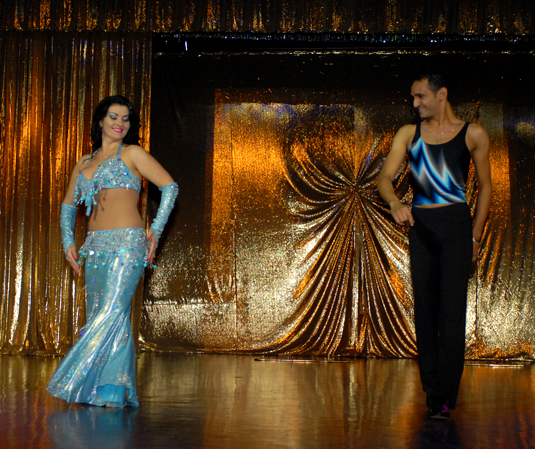 It shows that the stereotype of these awkward arm positions was already part of American pop culture before 1920. It shows that the stereotype of these awkward arm positions was already part of American pop culture before 1920. |
|
Irena Lexova's Book
The book Ancient Egyptian Dances by Irena Lexova, which was published in 1935, was one of the first books to examine dance-specific discoveries by archaeologists. The author was a college student who examined archaeology journals in search of articles related to dance. Its preface, written by Dr. Frantisek Lexa, states:
"Some years ago I saw some modern dancing girls perform Egyptian dances. The common characteristics of all these dances were the insipid, jerky movements, unaesthetic postures, and abrupt turns of limbs. Although some of the girls asserted that it was the ancient Egyptian pictures of Egyptian dancers which they copied, I could not recollect seeing such movements and postures on any ancient Egyptian pictures. " "
Lexova's book contains 76 pages of illustrations, and interestingly the only two that show the right-angle wrist and elbow positions that we normally associate with Pharaonic dance are figures 77 and 78, which are not Egyptian at all, but rather come from Etruscan tombs in Italy. Lexova's point, of course, is that the early 20th century dancers who brought this "Egyptian" posturing on stage were certainly not using real Egyptian information as their source.
Although Lexova could find no historical, factual link to ancient Egypt in those angular arm poses, Europeans and North Americans now widely associate them with that culture. |
|
Was Lexova Right?
For many years, I believed Lexova's assertion that the bent wrist and elbow pose had not existed in ancient Egypt. On repeated visits to Egypt, I explored many temples and tombs, often with private guides, in search of dance scenes. In 11 trips to Egypt, visiting many archaeological sites, I found many scenes showing other types of dance, but not the bent wrist and elbow style. On repeated visits to Egypt, I explored many temples and tombs, often with private guides, in search of dance scenes. In 11 trips to Egypt, visiting many archaeological sites, I found many scenes showing other types of dance, but not the bent wrist and elbow style.
So imagine my surprise in February of 2017, when I was on my 12th visit to Egypt, and I discovered this scene at the Temple of Horus at Edfu! This was my seventh time visiting this particular temple — why didn't I notice this on my previous six visits to it?
I asked my tour guide, who holds a master's degree in Egyptology, about the image, and he confirmed that it was indeed intended as a dance scene. He said that this scene depicts a liturgical dance performed by a priest. The vertical lines coming down from the hands represent a stream of liquid being poured.
ABOUT THE PHOTO: This image appears on a column at the Temple of Horus in Edfu, Egypt. Photo copyright 2017 by Shira, all rights reserved.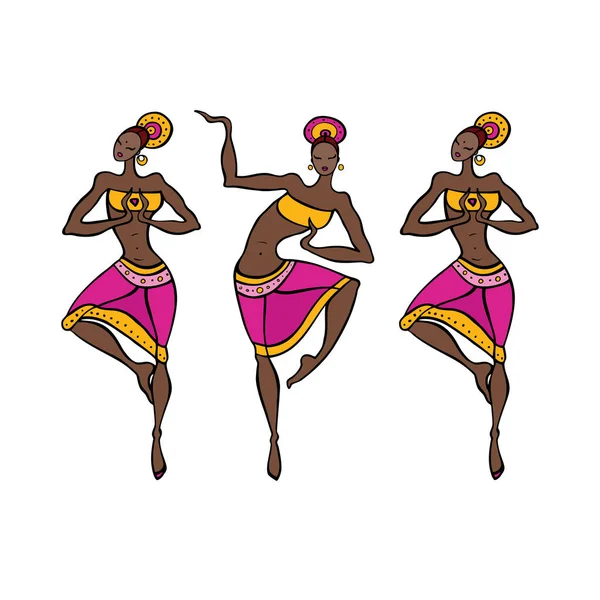
Although I have looked for dance scenes in many tombs and temples over my 14 visits to Egypt, Edfu is the only place where I have found this arm position. It's not widespread. It proves that Lexova's conclusion that this arm position did not exist in ancient Egypt was incorrect. However, since it appeared in the Edfu temple whose construction began in 237 BCE, it is 2,000 years newer than other scenes of ancient Egyptian dance that I have found. |
|
What Other Dance Scenes Come from Ancient Egypt?
One of the oldest images of dance that I have found from ancient Egypt lies inside the tomb of Ka-Gmni at Saqqara, south of Cairo. Ka-Gmni was the Chief Justice and Vizier to the Pharoah Teti. The dance scene depicts a row of young women with their hair tied back, dancing as if in a chorus line.
ABOUT THE PHOTO: This dance scene appears on the wall of the tomb of Ka-Gmni at Saqqara, Egypt, which dates back to about 2340 BCE.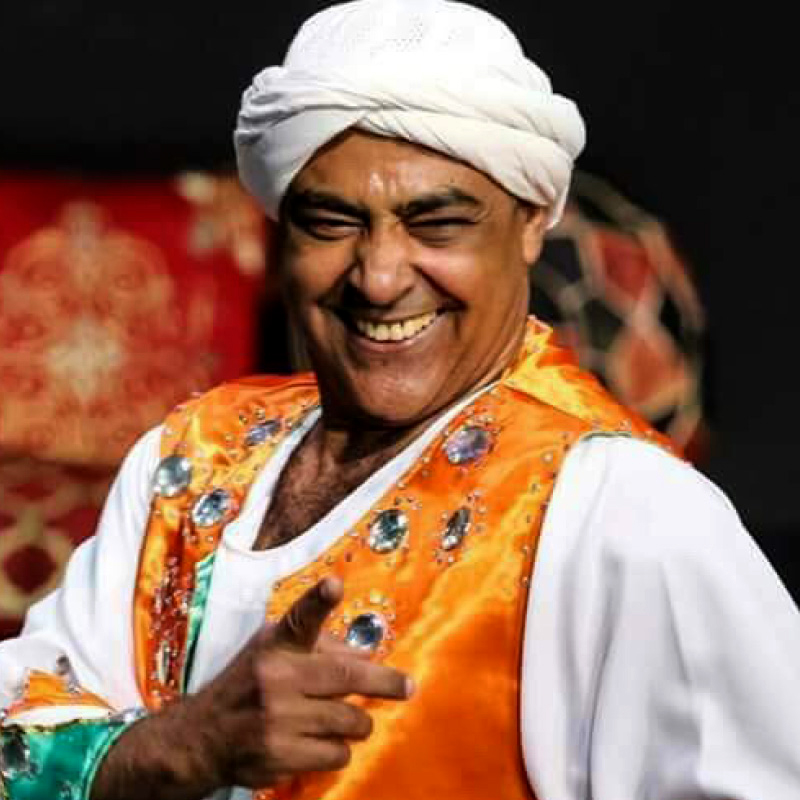 Similar dance imagery appears inside the tombs of Ankh-Ma-Hor and Mehu, also at Saqqara. Photo copyright 2019 by Shira, all rights reserved. Similar dance imagery appears inside the tombs of Ankh-Ma-Hor and Mehu, also at Saqqara. Photo copyright 2019 by Shira, all rights reserved.
The Saqqara tombs of Ka-Gmni, Mereruke, and Ty contain the oldest images of dancers in the Middle East I've been able to discover so far in my research into Middle Eastern dance history. (There could be even older ones out there, these are just the ones I've personally found so far.)
For additional examples of ancient Egyptian dance from Pharaonic times, Lexova's book mentioned above provides a reasonable place to start. Although I disagree with some of her analysis, the images in her book are fine for creative inspiration.
Unfortunately, the ancient Egyptians didn't leave behind any video tapes or DVD's for us to show what their dance forms looked like. We need to guess as best we can from the artwork and textual descriptions left behind. |
|
Where Can Pharaonic Dance Be Seen?In the theatrical dance scene (modern dance and its descendants), today's choreographers have taken a different direction from the Egyptian theme that inspired Isadora Duncan and Ruth St.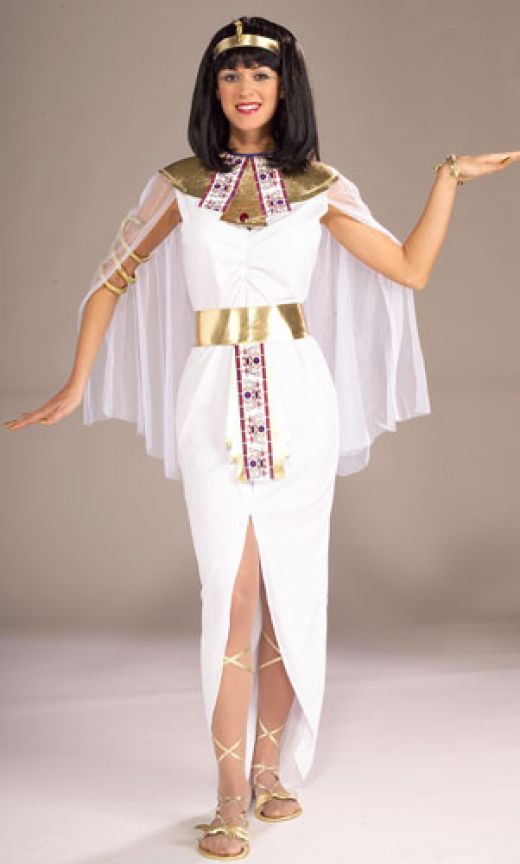 Denis. Denis.
I have seen Egyptian dance companies present Pharaonic tableaux; in particular, on two different occasions I have seen the folk troupe representing the Governorate of Luxor present Pharaonic pieces. One of those performances was at the Ahlan wa Sahlan dance festival, and the other was at the Festival of the Sun at Abu Simbel.
ABOUT THE PHOTO: The dance company for the Luxor Governorate performs a Pharaonic tableau in its 2005 show at the Ahlan wa Sahlan dance festival in Cairo. Photo copyright 2005 by Shira, all rights reserved.
Pharaonic dance is not a mainstream part of the global belly dance scene today. Once in a while someone will perform it, but more likely you could sit through an entire belly dancing festival without seeing any Pharaonic dance at all. Within the belly dancing community, you are most likely to see Pharaonic dance in these situations:
Video
- Delilah sells a video titled Dance to the Great Mother, which captures a Pharaonic dance she created to celebrate the role of women as life-givers.
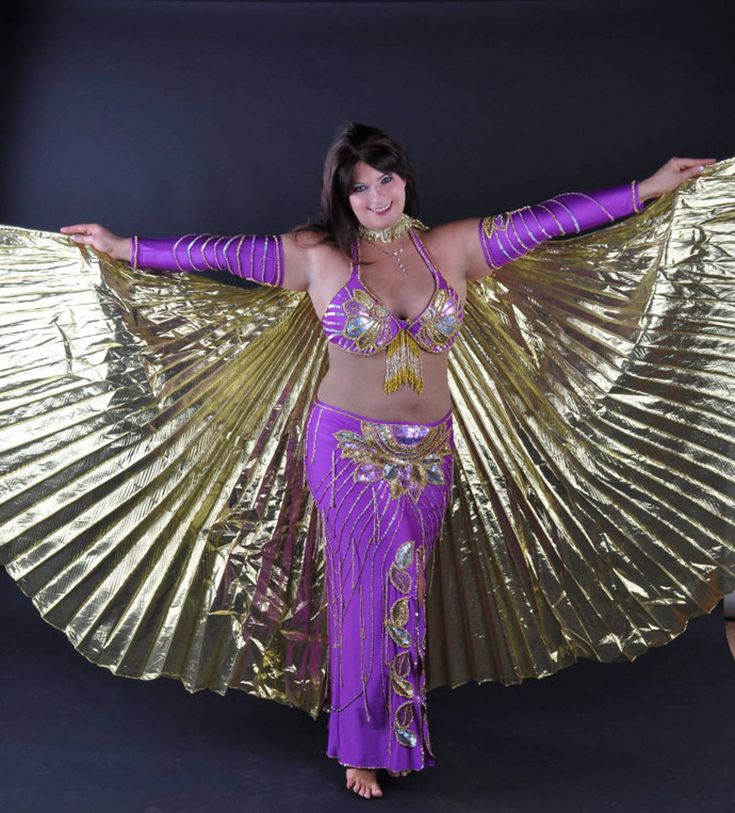 In her performance on this video, Delilah is 8 months pregnant. See the "Resources" section below for more information. In her performance on this video, Delilah is 8 months pregnant. See the "Resources" section below for more information.
- In the mid-1980's, Horacio Cifuentes (now in Berlin, Germany) released a video showing several of his performances, including a Pharaonic piece. He no longer sells this video, but you may be able to obtain it through used-video sources such as eBay.
- When I asked Horacio about the 1980's video, he told me that he has a new video titled Best of Oriental Fantasy with what he feels is a better Pharaonic segment on it. I haven't seen that video, so I can't comment on its merits.
|
|
Special Theatrical Productions
Some dancers organize special theatrical presentations which build dance performances around a central artistic theme. For example, Dhyanis used to sponsor a show every summer in the San Francisco area called "The Living Goddess" which featured goddess-themed dance performances. When appropriate to the subject matter of such a themed show, some dancers may present Pharaonic-style performances. When appropriate to the subject matter of such a themed show, some dancers may present Pharaonic-style performances.
In 1996, Laurel Victoria Gray produced a full-length show in Berlin, Germany of dances inspired by ancient Egypt. Its title was Egypta in tribute to the show of the same name that Ruth St. Denis created many decades earlier. She created much of the choreography herself, and recruited some other dancers such as Delilah Flynn of Seattle to contribute some pieces. Since then, Egypta: Myth, Magic, and Mystery has also been performed in the U.S. on various occasions.
ABOUT THE PHOTO: The illustration shows the postcard that Laurel used to promote one of the performances of Egypta. The wings for the costume of the goddess Isis were made from over 200 separate pieces of fabric. Laurel provided this image for me to use with this article.
Dance Festivals or Seminar Shows
Some belly dance festivals offer continuous performances on stage, and some seminar shows feature a dozen or more individual dance acts in one show. In these environments, the audience can grow weary of an endless parade of generic belly dancing. Even a highly talented dancer find it difficult to hold the audience's attention if seven other good soloists have performed just prior to her. For that reason, some dancers will experiment with other approaches, such as Pharaonic dance, to stand out from the crowd. In these environments, the audience can grow weary of an endless parade of generic belly dancing. Even a highly talented dancer find it difficult to hold the audience's attention if seven other good soloists have performed just prior to her. For that reason, some dancers will experiment with other approaches, such as Pharaonic dance, to stand out from the crowd.
Performance Art
Occasionally, belly dancers will be invited to participate in artistic events that showcase a variety of dance styles. Or, perhaps they'll be offered an opportunity to perform for a museum opening that requests an artistic presentation tied to the ancient Middle East. In these situations, dancers may experiment with unusual approaches, such as dancing while poetry is recited, performing Pharaonic dance, or enacting a story. |
|
How to Try Pharaonic DanceThere aren't many belly dancers who teach or perform Pharaonic dance because it's a theatrical construct, largely driven by foreign obsessions with ancient Egypt rather than organically arising within Middle Eastern culture. For that reason, you'll probably have difficulty finding a teacher in your community who has worked with Pharaonic dance. You may need to rely on videos showing performance of Pharaonic dance as a source of ideas and inspiration. For that reason, you'll probably have difficulty finding a teacher in your community who has worked with Pharaonic dance. You may need to rely on videos showing performance of Pharaonic dance as a source of ideas and inspiration.
Reflect on What You're Trying to Do
I would suggest that you start with doing some reading about
the culture of ancient Egypt, particularly the goddesses Hathor,
Bastet, and Isis, all of whom are associated with dance. By grasping
some of the flavor of this culture, you'll be in a better position
to deliver a convincing dance interpretation.
When I asked Delilah
Flynn about the process she has used to create her Pharaonic
dances, here is what she said:
To create a meaningful Pharaonic dance I need to think
like an ancient Egyptian. I do this by reading about ancient
Egyptian philology and religion, studying the hieroglyphics,
reading works on the daily lives of the Egyptians as scholars
have presumed, by visiting the temples of Egypt, and meditating
for inspirations. I research the dress, I make it, and I wear
it, to have a sense of movement. I craft, I paint, I bead. I
listen to the musical instrumentation known to exist at that
time. For the Egyptians, all their gods and goddesses are alive.
I resurrect them from out of the pages of history and I make
them live for me today. I research the dress, I make it, and I wear
it, to have a sense of movement. I craft, I paint, I bead. I
listen to the musical instrumentation known to exist at that
time. For the Egyptians, all their gods and goddesses are alive.
I resurrect them from out of the pages of history and I make
them live for me today.
Everything has meaning. As an artist I must have total immersion.
One must study the origins and impetus of all dance. It will
lead them to a deeply spiritual place; a communion with body,
life force and space. Go to the temples and you will find they
were all about space. Isadora Duncan said, "No movement
is owned by any culture, only rediscovered."
Imagine you are there and ask your deepest self how you feel
like moving and you will arrive at an authentic dance. Ask your
ba, your ka, your akh, your khaibit, your sahu, your khat.
As you learn more about the culture of ancient Egypt, plan
what you want your dance to say. Familiarize yourself with some
of the stories of ancient times — perhaps you'll find one that
you'd like to re-enact through dance. Maybe you'll want to use
dance to portray an actual historical character such as Hatshepsut,
or maybe you'll want to dance an archetype such as a temple priestess
to Hathor or an Assyrian slave girl dreaming of freedom.
The
book Ancient Egyptian Dances by Irena Lexova talks about the use of dance
for different occasions, such as funeral, religion, war, and
others. Maybe one of these concepts will inspire you. Reflect
on your own ideas about ancient Egypt. What did they have to
dance about? Why do you want to do a dance inspired by
this culture — what does the culture say to you? The more you
can bring your thoughts together into an understanding of what
you want to accomplish with your own dance, the more powerful
your dance will be.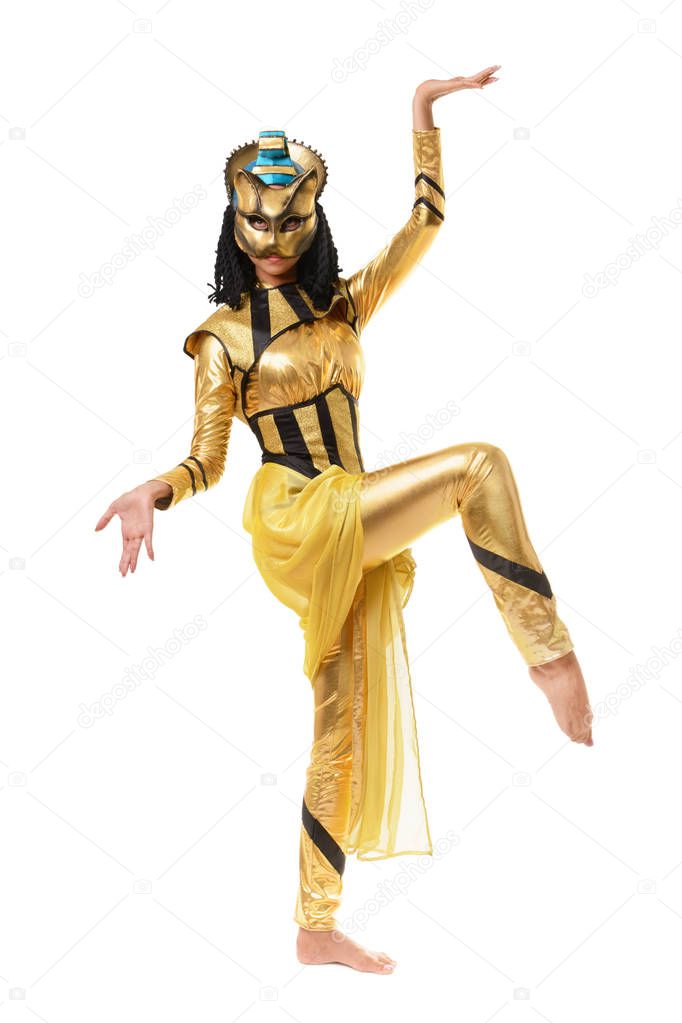 If you don't know what you're trying
to say with your dance, then your audience certainly won't know,
either. If you don't know what you're trying
to say with your dance, then your audience certainly won't know,
either. |
|
Costuming
Some dancers wear simple costuming for Pharaonic dance,
teaming a white robe with a Cleopatra-style wig and a
gold band around the forehead. Others create beautifully draped
elaborate dresses with sumptuous jewelry, belts, and other accessories.
The abundant supply of Egyptian artwork that has been discovered
on tomb walls provides many costume ideas. Spend some time studying
books about the art and history of ancient Egypt to look for
ideas that appeal to you.
Instructions for making Arabella's costume (shown to the right)
appear elsewhere on
this web site.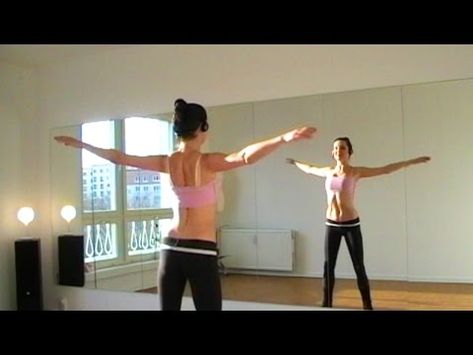 |
|
Music
Ancient artwork shows us that Egyptians used harps,
flutes, stringed instruments that resemble the modern-day saz
(long-necked lute), frame drums, and sistrums (type of rattle).
Some of the illustrations in Ancient Egyptian Dances distort
the shape of the fingers, as if they were playing finger cymbals
or castanets. This allows us to make some guesses about the type
of music that may have been used.
ABOUT THE PHOTO: This famous image of the Three Musicians appears inside the tomb of Nakht, in the Valley of the Nobles near Luxor, Egypt.
- My favorite music for this is Ancient Egypt, composed
in 1978 by Ali Jihad Racy for
the King Tutankhamun Exhibit in Seattle. Racy, an Egyptian ethnomusicologist, has conducted extensive
research into musical notations and instrumentation from ancient
times and composed some fascinating music based on what he learned.
 It's probably the closest you're likely to get to music that
captures the true flavor of ancient Egypt, short of finding an
ancient CD in an as-yet undiscovered tomb.
It's probably the closest you're likely to get to music that
captures the true flavor of ancient Egypt, short of finding an
ancient CD in an as-yet undiscovered tomb.
- Hymn to Hathor is an album produced by the Sands of Time music label, distributed by Serpentine Communications. It features the Henkesh Brothers, who are top-quality Egyptian musicians. Be sure to buy the CD version rather than buying tracks via download, because the version with the compact disk comes with an informative booklet about music and dance in ancient Egypt.
- Many dancers choose New Age music for their Pharaonic interpretations,
particularly if they choose to enact a temple scene. The band
named Desert Wind has a number of CD's that may provide inspiration.
My favorite Desert Wind CD's are Kali Ma and Return
to the Goddess.
- Volume 6 of Eddie Kochak's Strictly Belly Dancing recordings contains one song titled "Phaedra Pharaonica" which
is intended for this type of dance interpretation.
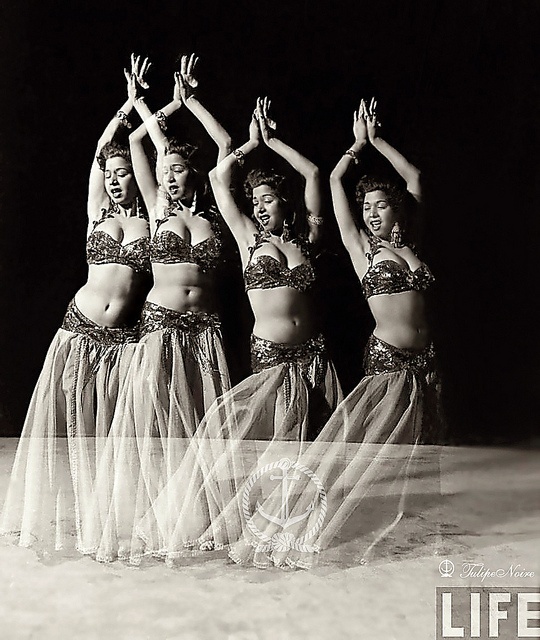 The cover of the CD shows the dancer Phaedra from New York City wearing a Pharaonic costume. Phaedra has an academic background as an Egyptologist. The cover of the CD shows the dancer Phaedra from New York City wearing a Pharaonic costume. Phaedra has an academic background as an Egyptologist.
- The "Phaedra Pharaonica" track from the Eddie Kochak album
can also be found on a CD titled Aziza Raks, which is
available from Hollywood Music Center.
|
|
Movement
Don't limit yourself to the stereotype of angular arm and hand poses that
the public thinks are typically Egyptian. If you want to include
some of these poses because it matches your creative vision,
that's your privilege as an artist. However, don't feel that you're
required to.
Try to expand your thinking beyond the obvious cliché,
and unleash your personal creativity. Look at images of dance from temples and tombs including the ones with this article.
ABOUT THE PHOTO: These dancers appear on the west wall of the Luxor Temple in Luxor, Egypt. This temple was built around 1,400 BCE, which means these images of dancers are about 3,400 years old. Photo copyright 2017 by Shira, all rights reserved.
Start with a view of what
message you want the dance to portray. Then pick music that evokes
that message in you. Once you have your message and your music,
the movements will follow. Just make sure that your movements
and your desired costuming approach will work together! |
|
Resources to Inspire You
- Dance. This 2009 article by Erika Meyer-Dietrich appeared in the UCLA Encyclopedia of Egyptology, and offers a scholarly view of ancient Egyptian dance. It focuses on the dancer, the occasion for dancing, the location of the dance, and the imagined space that the dance creates.

- Ancient Egyptian Dances. This book by Irena Lexova is an excellent starting point for learning facts about the dance forms of ancient Egypt. It has some limitations, but is worth a look. Click here to read my review.
- "The Ancient Dances of Egypt." This 56-page manuscript by Elizabeth "Artemis" Mourat describes the research by Artemis into the religious, festival, combat, harem, and banquet dances of ancient Egypt.
- When the Drummers were Women: A Spiritual History of Rhythm. By Layne Redmond. Research into the historical place that drumming had in spiritual practices in the pre-patriarchy religions.
- Hathor Rising: The Power of the Goddess in Ancient Egypt. By Alison Roberts. Recommended by Delilah.
ABOUT THE PHOTO: A wall inside the Tomb of Kheruef in the Assasif Valley of the Nobles near Hatshepsut's temple at Luxor, Egypt shows a row of women dancing.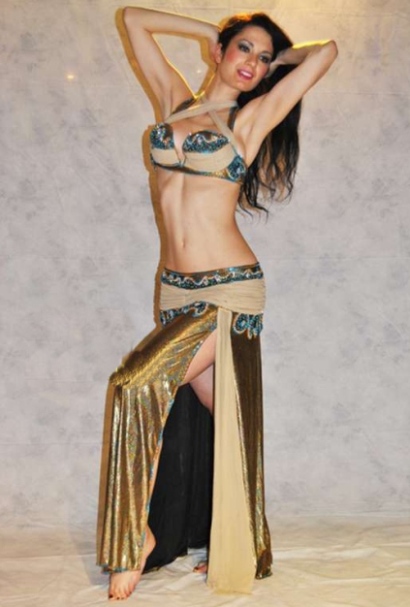 Archaeologists estimate it was built approximately 1,350 BCE. Photo copyright 2016 by Shira, all rights reserved. Archaeologists estimate it was built approximately 1,350 BCE. Photo copyright 2016 by Shira, all rights reserved. |
|
Where to Perform Pharaonic DanceAs I mentioned above, some situations that lend themselves well to Pharaonic dance include belly dance festivals, seminar shows, special theatrical productions, and special performance art presentations. In addition, there may be opportunities to perform this dance style at a local museum that's showcasing Egyptian antiquities, a theme party based on ancient Egypt, or an educational presentation about ancient Egypt.
But there are also some situations where Pharaonic dance is not the right fit. I would advise against performing it in situations where the audience and person who hired you are expecting either a belly dance performance or a traditional dance of the Middle East.![]() Don't do your Pharaonic dance at Arabic weddings who expect a 3-tiered candelabrum, birthday parties where the person who hired you expects a "bellygram", restaurants serving primarily Middle Eastern audiences, or educational seminars about ethnic/folkloric dance forms. In such situations, you would disappoint your audience and lose credibility as a dance professional. Don't do your Pharaonic dance at Arabic weddings who expect a 3-tiered candelabrum, birthday parties where the person who hired you expects a "bellygram", restaurants serving primarily Middle Eastern audiences, or educational seminars about ethnic/folkloric dance forms. In such situations, you would disappoint your audience and lose credibility as a dance professional.
ABOUT THE PHOTO: A row of women dancing accompanied by women clapping appears inside the tomb of Mereruke at Saqqara, Egypt. |
|
Closing ThoughtsIt can be fun to explore Pharaonic dance as a change of pace
in your creative process. However, don't expect to find teachers,
choreography, and methodology all ready for you to adopt.
There
is not much information available on the actual dances performed
by the historical people, so you'll need to create your own
vision and perform an interpretive dance. There's nothing wrong
with that, as long as you choose appropriate places to present
it, and as long as you're honest about the fact that this is
your own creation rather than an authentic historical re-enactment. There's nothing wrong
with that, as long as you choose appropriate places to present
it, and as long as you're honest about the fact that this is
your own creation rather than an authentic historical re-enactment.
So enjoy playing with this inspiration, and let your own artistic vision take you
on a flight of creativity far beyond those angled-wrist poses.
ABOUT THE PHOTO: Shira wears a Pharaonic costume made by Reda al-Hadidi's atelier in Cairo. The photo was taken backstage after depicting Nefertari in the opening mawwal for a Nubian dance set with Habeeba Hobeika's dance company. |
|
Copyright Notice
This entire web site is copyrighted. All rights reserved.
All articles, images, forms, scripts, directories, and product reviews on this web site are the property of Shira unless a different author/artist is identified. Material from this web site may not be posted on any other web site unless permission is first obtained from Shira. Material from this web site may not be posted on any other web site unless permission is first obtained from Shira.
Academic papers for school purposes may use information from this site only if the paper properly identifies the original article on Shira.net using appropriate citations (footnotes, end notes, etc.) and bibliography. Consult your instructor for instructions on how to do this.
If you wish to translate articles from Shira.net into a language other than English, Shira will be happy to post your translation here on Shira.net along with a note identifying you as the translator. This could include your photo and biography if you want it to. Contact Shira for more information. You may not post translations of Shira's articles on anybody else's web site, not even your own.
If you are a teacher, performer, or student of Middle Eastern dance, you may link directly to any page on this web site from either your blog or your own web site without first obtaining Shira's permission. Click here for link buttons and other information on how to link. Click here for link buttons and other information on how to link.
|
 Egyptian🇪🇬 gangs gets sturdy . What They Gon Say.
Egyptian🇪🇬 gangs gets sturdy . What They Gon Say.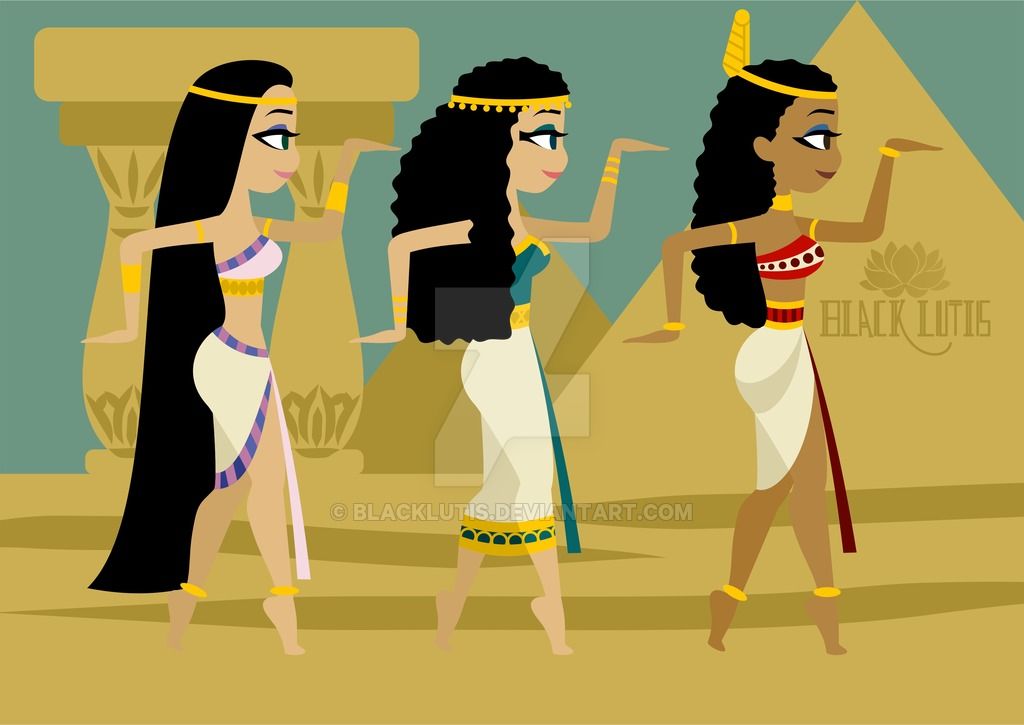 8K Likes, 617 Comments. TikTok video from vintage.egyptx (@vintage.egyptx): "#egypt #fyp #fypシ #egyptian #culture #مصر #bellydancer #bellydance #bellydancing". Belly dancing in old Egyptian movies🇪🇬🤩: | 1960-1970📍. Leih Beydary Keda.
8K Likes, 617 Comments. TikTok video from vintage.egyptx (@vintage.egyptx): "#egypt #fyp #fypシ #egyptian #culture #مصر #bellydancer #bellydance #bellydancing". Belly dancing in old Egyptian movies🇪🇬🤩: | 1960-1970📍. Leih Beydary Keda.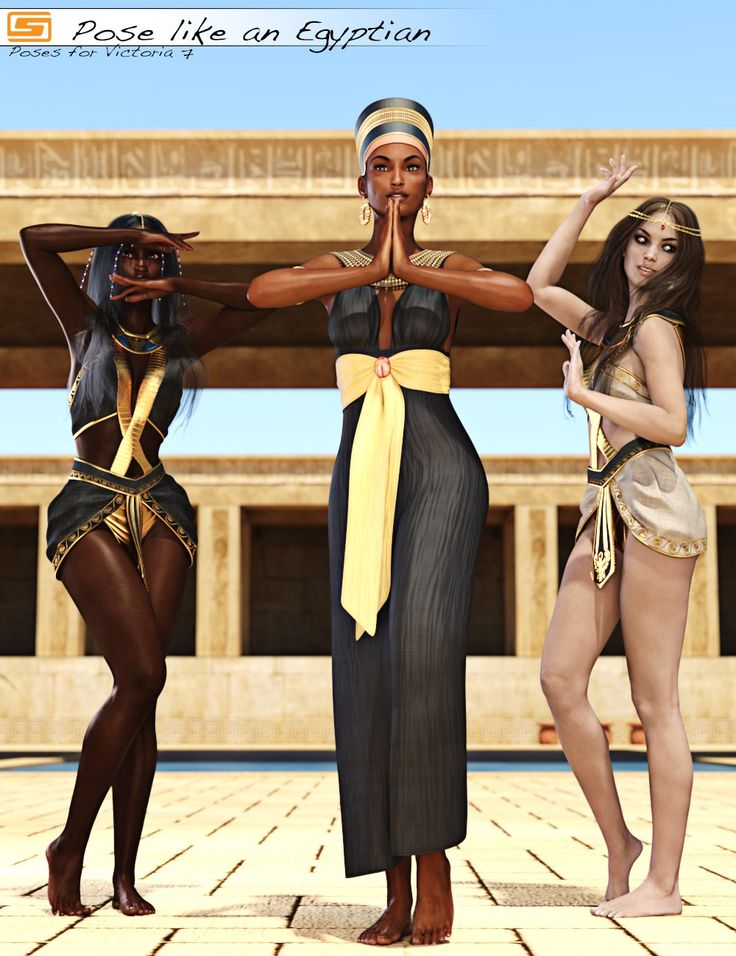 9K Likes, 1.1K Comments. TikTok video from stella_bellydance (@stella_bellydance): "Bride Balance that cane with that dress and dance at same time 🙌🏼🤩🤍💃🏿 she got skills! #StellaBellydance #Bellydance#Bride#egyptian". original sound.
9K Likes, 1.1K Comments. TikTok video from stella_bellydance (@stella_bellydance): "Bride Balance that cane with that dress and dance at same time 🙌🏼🤩🤍💃🏿 she got skills! #StellaBellydance #Bellydance#Bride#egyptian". original sound.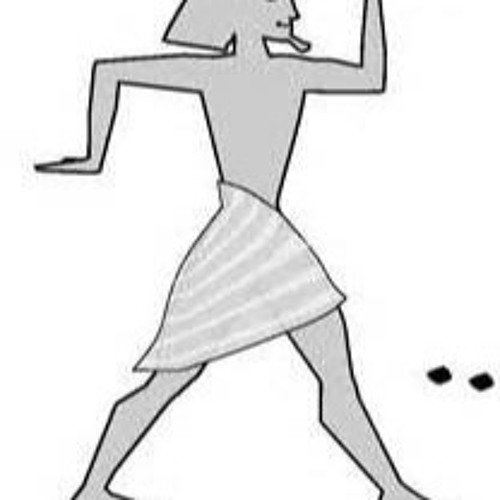 1K Likes, 133 Comments. TikTok video from Maggie Jawhari (@maggiejawhari): "Oops may have snuck in some debke😅 !!! #saididance #bellydancer #egyptianbellydance #egypt #arab #aywa #bellydancing #saadelsogayr". هتجوز.
1K Likes, 133 Comments. TikTok video from Maggie Jawhari (@maggiejawhari): "Oops may have snuck in some debke😅 !!! #saididance #bellydancer #egyptianbellydance #egypt #arab #aywa #bellydancing #saadelsogayr". هتجوز.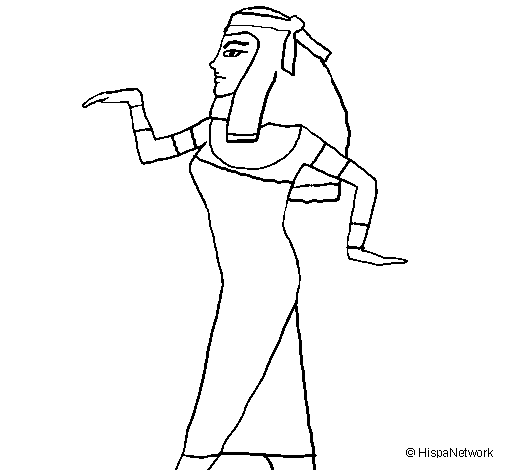 But it is worth noting that high-ranking people did not participate in such dances, but only watched the hired dancers who amused the guests and hosts of the holiday.
But it is worth noting that high-ranking people did not participate in such dances, but only watched the hired dancers who amused the guests and hosts of the holiday. 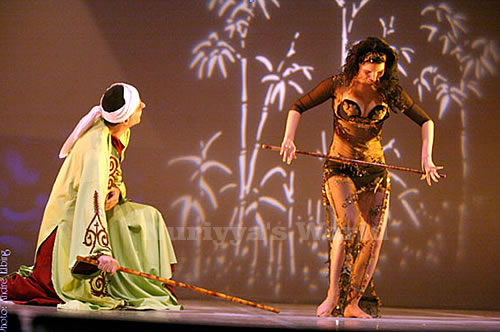 Some part of its dance tradition was adopted from each state. In 1500 B.C. in the choreography of Ancient Egypt, even more flexibility, elegance and sophistication appeared, which were introduced by Indian bayadères.
Some part of its dance tradition was adopted from each state. In 1500 B.C. in the choreography of Ancient Egypt, even more flexibility, elegance and sophistication appeared, which were introduced by Indian bayadères. 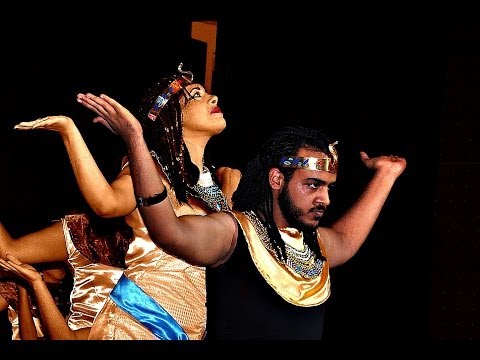 But, despite the expiration of so many centuries, the art of dance of this country has remained unique and unrepeatable. The Egyptians managed to carry through the centuries their traditions and manners, inherent only to their people.
But, despite the expiration of so many centuries, the art of dance of this country has remained unique and unrepeatable. The Egyptians managed to carry through the centuries their traditions and manners, inherent only to their people. 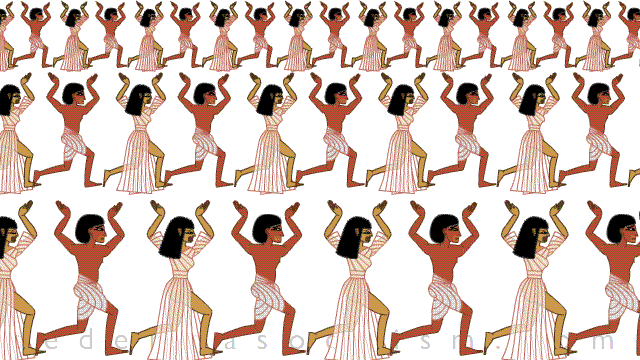 The transformation of the dance from a ritual into a spectacle is associated mainly with the funeral rite, when the action took place in the temple. The wedding ceremony was also one of the first dances. spectacles. Dance has also become an obligatory component in Nar. theater in the 13th century al-haqqavati (actor-narrator), was preserved in the theater of wandering actors (17th century), nar. theater as-samir (18th century) and in the theater of Europe. forms 19- early 20th century In decomp. In the regions of Egypt, there are many dances of later origin: al-haggala (jumping), al-bambutyya (changer), al-kaffafa (slapping) and a female solo dance known as a belly dance, probably developed on the basis of the now disappeared nar. dance annakhla (and mitaup) expulsion of a bee that has fallen into the clothes of a dancer). Attempts to stage folk dances on the stage belong to the 2nd floor. 19th century, when the first theaters appeared in Egypt, in particular the opera theater (1869). Tours of foreign opera and ballet companies in Egypt contributed to the emergence of musical and dance performances.
The transformation of the dance from a ritual into a spectacle is associated mainly with the funeral rite, when the action took place in the temple. The wedding ceremony was also one of the first dances. spectacles. Dance has also become an obligatory component in Nar. theater in the 13th century al-haqqavati (actor-narrator), was preserved in the theater of wandering actors (17th century), nar. theater as-samir (18th century) and in the theater of Europe. forms 19- early 20th century In decomp. In the regions of Egypt, there are many dances of later origin: al-haggala (jumping), al-bambutyya (changer), al-kaffafa (slapping) and a female solo dance known as a belly dance, probably developed on the basis of the now disappeared nar. dance annakhla (and mitaup) expulsion of a bee that has fallen into the clothes of a dancer). Attempts to stage folk dances on the stage belong to the 2nd floor. 19th century, when the first theaters appeared in Egypt, in particular the opera theater (1869). Tours of foreign opera and ballet companies in Egypt contributed to the emergence of musical and dance performances. The opening of dance schools dates back to the same time (outside of schools, dance training existed since the 17th century). After the revolution 1952 dances began to be created. ensembles, among which "Reda" was popular (organized in 1958, the leading dancers were Farida Fahmi and Mahmud Reda).
The opening of dance schools dates back to the same time (outside of schools, dance training existed since the 17th century). After the revolution 1952 dances began to be created. ensembles, among which "Reda" was popular (organized in 1958, the leading dancers were Farida Fahmi and Mahmud Reda). 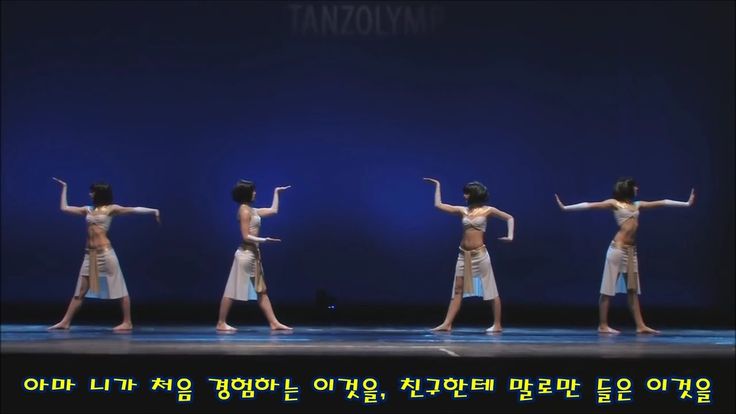 M. Sergeev), "The Nutcracker" (ballet dancer Shatilov), both - 1968 ; "Don Giovanni" (ballet. Kuznetsov), "Afternoon of a Faun" and "Daphnis and Chloe" (ballet. S. Lifar), both - 1970; "Cinderella" (1978, ballet M. Fahmi Ezz) and others
M. Sergeev), "The Nutcracker" (ballet dancer Shatilov), both - 1968 ; "Don Giovanni" (ballet. Kuznetsov), "Afternoon of a Faun" and "Daphnis and Chloe" (ballet. S. Lifar), both - 1970; "Cinderella" (1978, ballet M. Fahmi Ezz) and others 
 Often, these are based on modern-day beliefs about the culture of ancient Egypt, many of which have not been supported by research.
Often, these are based on modern-day beliefs about the culture of ancient Egypt, many of which have not been supported by research. 
 These dancers have provided the most exciting interpretations what the dance forms of ancient Egypt may have looked like.
These dancers have provided the most exciting interpretations what the dance forms of ancient Egypt may have looked like. Isadora Duncan, and later Ruth St. Denis, embraced Egypt as a theme, and used it as inspiration when creating their own distinctive dances.
Isadora Duncan, and later Ruth St. Denis, embraced Egypt as a theme, and used it as inspiration when creating their own distinctive dances.  It shows that the stereotype of these awkward arm positions was already part of American pop culture before 1920.
It shows that the stereotype of these awkward arm positions was already part of American pop culture before 1920. "
" On repeated visits to Egypt, I explored many temples and tombs, often with private guides, in search of dance scenes. In 11 trips to Egypt, visiting many archaeological sites, I found many scenes showing other types of dance, but not the bent wrist and elbow style.
On repeated visits to Egypt, I explored many temples and tombs, often with private guides, in search of dance scenes. In 11 trips to Egypt, visiting many archaeological sites, I found many scenes showing other types of dance, but not the bent wrist and elbow style.
 Similar dance imagery appears inside the tombs of Ankh-Ma-Hor and Mehu, also at Saqqara. Photo copyright 2019 by Shira, all rights reserved.
Similar dance imagery appears inside the tombs of Ankh-Ma-Hor and Mehu, also at Saqqara. Photo copyright 2019 by Shira, all rights reserved. Denis.
Denis.  In her performance on this video, Delilah is 8 months pregnant. See the "Resources" section below for more information.
In her performance on this video, Delilah is 8 months pregnant. See the "Resources" section below for more information.  When appropriate to the subject matter of such a themed show, some dancers may present Pharaonic-style performances.
When appropriate to the subject matter of such a themed show, some dancers may present Pharaonic-style performances. In these environments, the audience can grow weary of an endless parade of generic belly dancing. Even a highly talented dancer find it difficult to hold the audience's attention if seven other good soloists have performed just prior to her. For that reason, some dancers will experiment with other approaches, such as Pharaonic dance, to stand out from the crowd.
In these environments, the audience can grow weary of an endless parade of generic belly dancing. Even a highly talented dancer find it difficult to hold the audience's attention if seven other good soloists have performed just prior to her. For that reason, some dancers will experiment with other approaches, such as Pharaonic dance, to stand out from the crowd. For that reason, you'll probably have difficulty finding a teacher in your community who has worked with Pharaonic dance. You may need to rely on videos showing performance of Pharaonic dance as a source of ideas and inspiration.
For that reason, you'll probably have difficulty finding a teacher in your community who has worked with Pharaonic dance. You may need to rely on videos showing performance of Pharaonic dance as a source of ideas and inspiration. I research the dress, I make it, and I wear
it, to have a sense of movement. I craft, I paint, I bead. I
listen to the musical instrumentation known to exist at that
time. For the Egyptians, all their gods and goddesses are alive.
I resurrect them from out of the pages of history and I make
them live for me today.
I research the dress, I make it, and I wear
it, to have a sense of movement. I craft, I paint, I bead. I
listen to the musical instrumentation known to exist at that
time. For the Egyptians, all their gods and goddesses are alive.
I resurrect them from out of the pages of history and I make
them live for me today.
 If you don't know what you're trying
to say with your dance, then your audience certainly won't know,
either.
If you don't know what you're trying
to say with your dance, then your audience certainly won't know,
either.
 It's probably the closest you're likely to get to music that
captures the true flavor of ancient Egypt, short of finding an
ancient CD in an as-yet undiscovered tomb.
It's probably the closest you're likely to get to music that
captures the true flavor of ancient Egypt, short of finding an
ancient CD in an as-yet undiscovered tomb.  The cover of the CD shows the dancer Phaedra from New York City wearing a Pharaonic costume. Phaedra has an academic background as an Egyptologist.
The cover of the CD shows the dancer Phaedra from New York City wearing a Pharaonic costume. Phaedra has an academic background as an Egyptologist.

 Archaeologists estimate it was built approximately 1,350 BCE. Photo copyright 2016 by Shira, all rights reserved.
Archaeologists estimate it was built approximately 1,350 BCE. Photo copyright 2016 by Shira, all rights reserved. There's nothing wrong
with that, as long as you choose appropriate places to present
it, and as long as you're honest about the fact that this is
your own creation rather than an authentic historical re-enactment.
There's nothing wrong
with that, as long as you choose appropriate places to present
it, and as long as you're honest about the fact that this is
your own creation rather than an authentic historical re-enactment.  Material from this web site may not be posted on any other web site unless permission is first obtained from Shira.
Material from this web site may not be posted on any other web site unless permission is first obtained from Shira.  Click here for link buttons and other information on how to link.
Click here for link buttons and other information on how to link.


